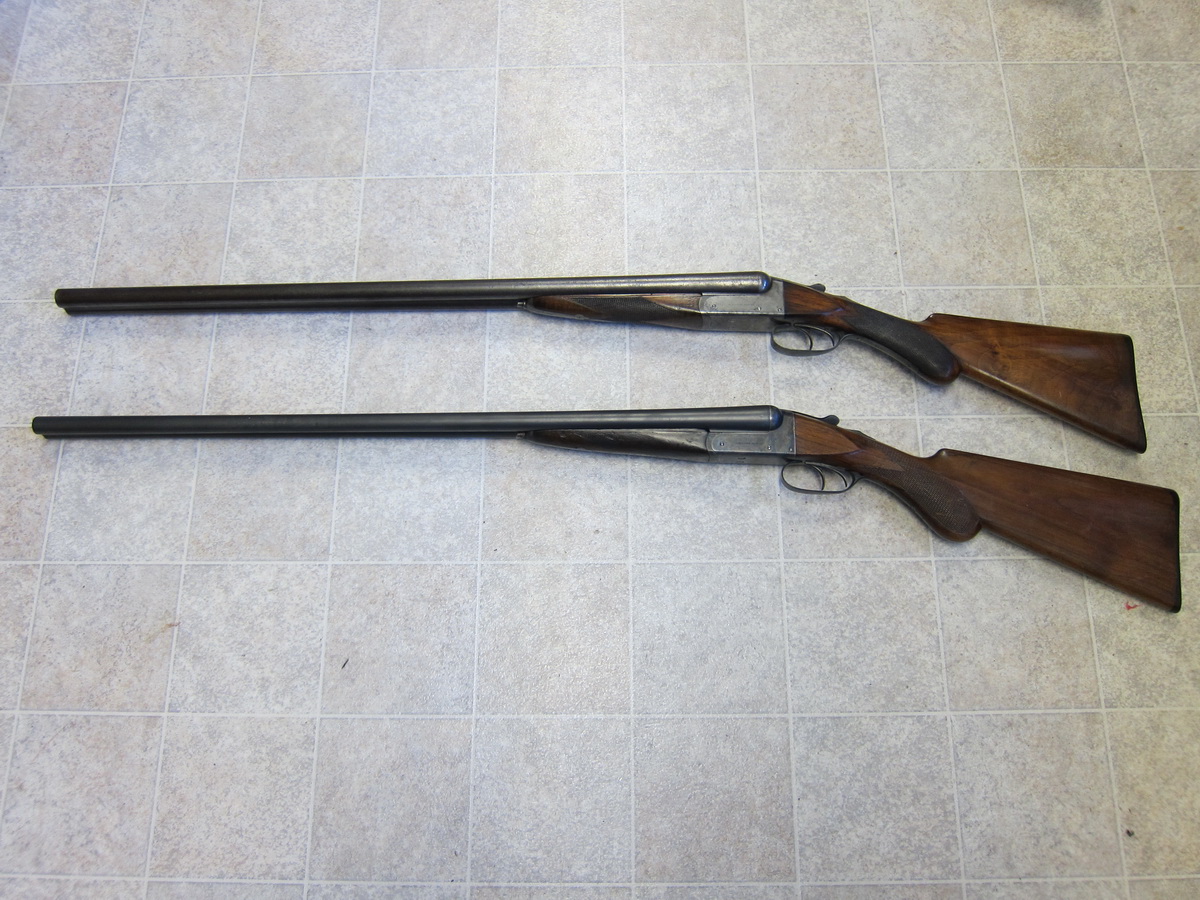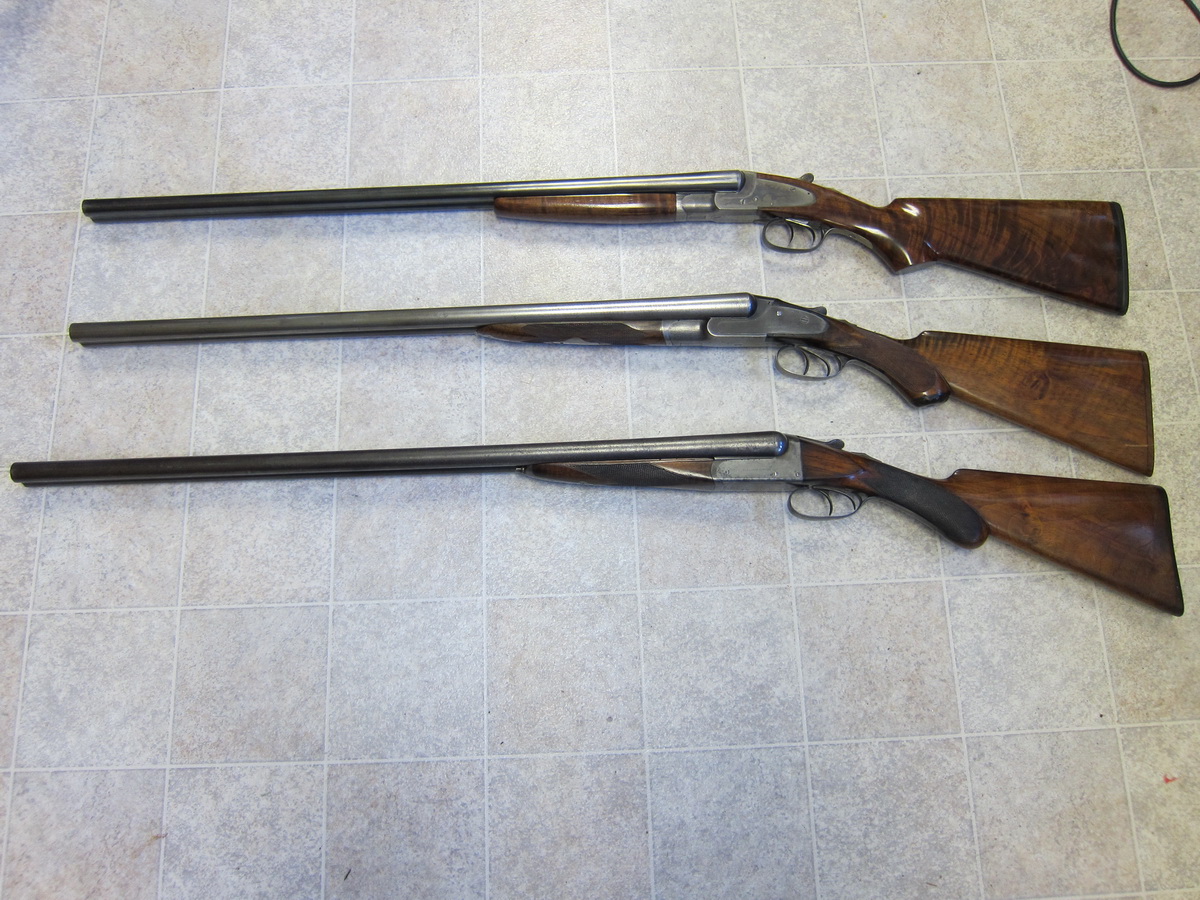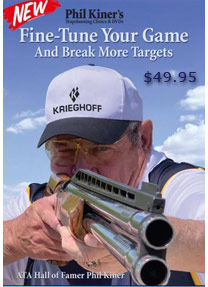



Like most boys my age in the early 1950’s, my first gun was a single-shot .410. It didn’t take very long for me to find out it wasn’t much good on flying targets or even running rabbits for that matter. My only source of income was a paper route, so funds were pretty scarce. A new Model 870 or a Model 12 was just a dream.
We had a local pawn shop dealer who was a very understanding man to the point he would actually rent out guns to high school kids to take out hunting by the day. He also sold us shotgun shells for 10 cents each. A whole box of shells was equal to a week’s worth of gas for our motor scooters, so a dollar’s worth of shells had to last all day.
Understandably, most of the guns were well-worn pumps from the local hardware stores, and very few would shoot over twice without jamming, so it was a special day when a side-by-side was available for rent. Looking back, I am sure most, if not all, the guns were choked Modified and Full but they always seemed to go bang every time.
Outdoor Life and Field & Stream magazines became important parts of our lives back then. We would eagerly devour the words of writers like Jack O’Conner and Warren Page. Soon, I had memorized the names of all the American double gunmakers like Parker, Fox, Lefever and Ithaca.
Things became a bit confusing when I was able to rent a Lefever from our friendly pawn broker for a day because I knew from my books a Lefever should be a sideplated gun, and what I held in my hands was a very plain boxlock gun. About the same time, I noticed the Savage-Fox guns in the hardware stores sure didn’t look like the pictures in the magazines.
Time passed and I got to the age when I began to notice the shape of my female friends had become more interesting than the shape of shotguns, and also that cars were much more comfortable to ride than motor scooters. Before long, I found myself in Uncle Sam’s service and not long after college. However, I still had no time or money for guns, but I did manage to broaden my gun-loving horizons with better gun books and magazines.
After a job or two in some faraway lands, I came home and met the love of my life and began to settle down to a lifestyle that had spare time and money enough to renew my interest in guns and hunting. After reading Michael McIntosh’s book Best Guns, I decided I needed to collect at least one of the doubles that represented the “Golden Era” of shotgunning here in America. The Winchester 21 and the Remington 32 didn’t really come into being until the 1930’s, and they were priced way beyond what I could afford, so they weren’t on my list.
I soon learned several of the gun companies didn’t make it through the Depression and had been swallowed up by Ithaca, Savage/Stevens and Remington. Ithaca had bought out Lefever; Savage had purchased Fox. Remington acquired Parker; Marlin engulfed L.C. Smith.
Ithaca and Savage made the original guns of Lefever and Fox for a short period but soon used the names of these famous makers on newly designed economy models in an effort to survive the tough economic times of the 1930’s.
Living in Dallas, Texas, was a good place for an aspiring gun collector in the early ’60s. There were many small gun clubs active in the Dallas/Ft. Worth area, and there was at least one gun show every weekend in the Metroplex area.
L.C. Smiths were fairly easy to find in 12 gauge as were Ithacas. Parkers were less common, with the Trojan model dominating the selection. However, I didn’t really consider the Trojan model to be a real Parker and felt the same of the Ithaca-Lefevers and the later Fox shotguns as made by Savage/Stevens.
I did manage to find a G grade Parker someone had sent to Belgium to have fluid-steel barrels made, so it did not command the price an original gun would have. That was okay with me, as it was a price I could afford.
My next find was an original Grade 3 L.C. Smith with Damascus barrels for sale at a good price. By then, I had discovered a magazine called the Double Gun Journal. A series of articles in that magazine written by Sherman Bell convinced me Damascus barrels were not the death trap that popular opinion declared them to be. Indeed, the stock on L.C. Smith shotguns is the area most likely to be a trouble spot. The inletting required by the sideplated action made it very susceptible to breakage if mishandled. I soon found a field grade 16-gauge Elsie in great shape except for a busted stock. It is pictured in this article with its safe-mate, a 16-gauge Lefever. The Lefever is a G grade gun with Damascus steel barrels, which I found in the basement at a Tulsa gun show. The Lefever is one of the rarest of American shotguns and has many unique features beyond the scope of this article, but perhaps the featured item in another article.
Several Ithaca guns passed through my hands, but most of them had way too much drop in the stock for me. I did come across a nice N.I.D. model in 16 gauge that seemed to be a good fit for a school teacher friend, so it followed her home one day.
I happened to be in a small gun show in East Texas when I came across a table covered with old doubles. I noticed a set of nice Damascus barrels poking out of the bottom of the pile. An elderly gentleman was sitting at the table, so I asked him about the barrels. He told me it was an old Remington. Well, that was news to me. We began talking about price, and before long I was the owner of my first side-by-side Remington shotgun. The gun turned out to be an 1894 AE grade with very nice Damascus barrels. The stock was much straighter than those found on most guns of the era and was even cast off for a right-handed shooter. The forearm used an Anson-type release I had not seen on any other American gun. I was pleasantly surprised to find the gun had selective ejectors that still worked just fine. The finish work on the gun and the quality of the wood and checkering was much better than most of the entry-level grades of guns of that era, so I started looking into the history of the Remington side-by-sides.
One of the first things I discovered was Remington had been making side-by-sides since 1873, which put them among the very first to make breech-loading doubles in America. They were making doubles 21 years later good enough to compete with those made in England. Indeed, Remington actually marketed some guns in England, and some are marked as being made in New York and London.
The 1894 gun represents the best of the side-by-sides that carried the Remington name. Many were made with Damascus barrels, and the 1894 catalog states: “The Remington guns, both hammer and hammerless, are especially adapted to all nitro powders, and every gun is thoroughly proved, tested and targeted before leaving the armory.” Anyone who is interested in loading smokeless powder in these guns or any other gun of this era should read the articles in the Double Gun Journal written by Sherman Bell. Mr. Bell went to great lengths to prove quality guns of this era are quite safe with reasonable loads, but each gun should be judged on its own merit and should be checked out by a competent gunsmith before firing it with loads of any type.
The 1894 was made in three gauges: 10, 12 and 16 gauge. You also need to keep in mind the customer could order almost anything they wanted in those days, so it seems as though there is an endless variation among guns of this era. I recently came across a 16 gauge and was surprised to discover it had 2¾” chambers and non-Damascus barrels. It had been treated pretty rough during its life and wasn’t good enough to be a collector’s gun. I took it to my gunsmith, Phillip Crenwelge (210-313-5988) who convinced me to have the receiver re-case hardened and the barrels re-blackened. The gun still isn’t much to look at, but it will do the job in the dove fields.
The 1894 was made in grades A through E, and the top grades will compete on even terms with any gun made in America for strength and beauty. The problem is finding one. The 1894 was made from 1894 to 1910 for a total of some 42,000 units. It seems the 1894 was usually bought by people who were serious shooters. Even in the higher grades, all show signs of heavy use which made the survival rate quite low, but if you can find one, you will have a gun you will cherish for a long time to come.
Much more common is the model 1900, which is an economy version of the 1894. It is not the same in fit or finish as the 1894, but there were some 98,000 of the 1900s made. If you are interested in the Remington Doubles, a must-read is the book written about them by Charles G. Semmer.
I have enjoyed every minute of time spent in researching, finding, refurbishing and firing my 1894 Remingtons. I feel they are definitely the forgotten classic of American doubles. SS
Photos by Dave and Frances Robinson
Dave Robinson was raised in a small town in North Texas and has been around guns and hunting all his life. After spending time in the service and college, he moved to Dallas. He shot his first registered skeet targets in 1973 and trap in 1976. Along the way, he was lucky enough to meet Ken Sedlecky, Tommy Oliver, Fred Missildine and Phil Kiner, all of whom had an impact on his shooting. Dave retired from Texas Instruments/Raytheon Corp. as a Senior Design Engineer in 1999. He thought he would spend a lot of time shooting registered targets but fate intervened, and cancer and back surgeries made that impossible. He wrote his first article for Shotgun Sports in 1973. In 1974 he became a certified instructor for the 4H Shooting Sports and has taught children to shoot for over a decade. He often feels they have taught him more than he has taught them.



